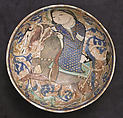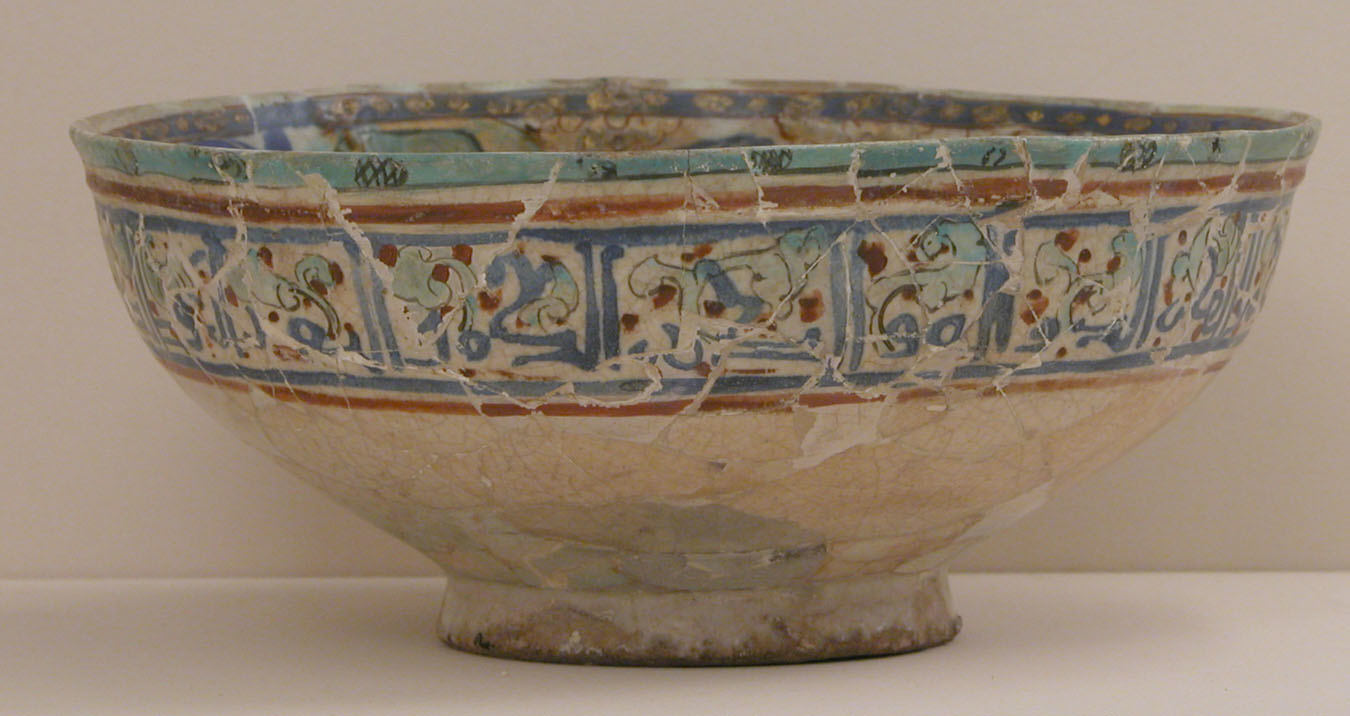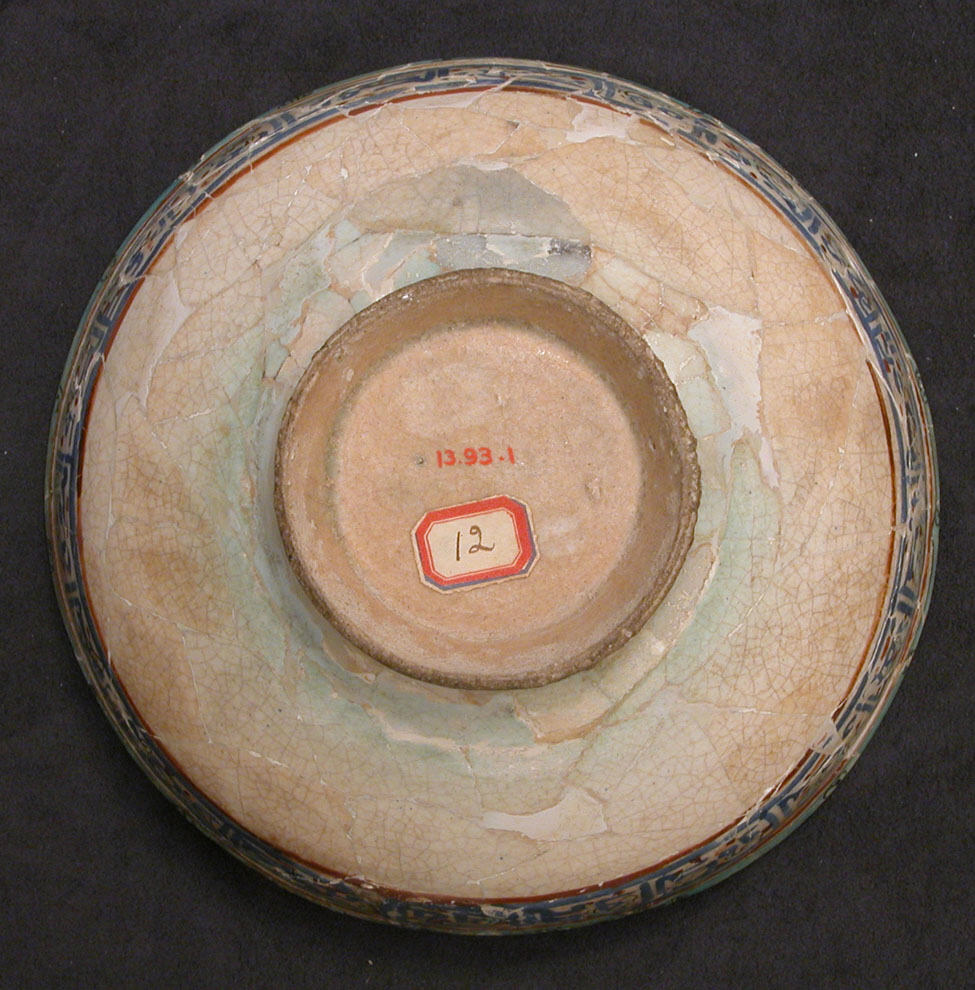Bowl
Not on view
Many early Islamic ceramics survive in fragmentary condition. In the past losses were sometimes disguised using shards from similar objects or replaced with new ceramic pieces. In the case of this mina’i bowl, the fine saw marks visible in the radiograph around the edge of the large central fragment as well as the fluorescence of the overlying paint under ultraviolet illumination indicate that this area and several other small losses were filled using old fragments that were cut to shape and painted. As this century-old restoration has historic value and may be preserved, digital editing software has been used to reveal how much of the original bowl is extant.
This image cannot be enlarged, viewed at full screen, or downloaded.
This artwork is meant to be viewed from right to left. Scroll left to view more.





